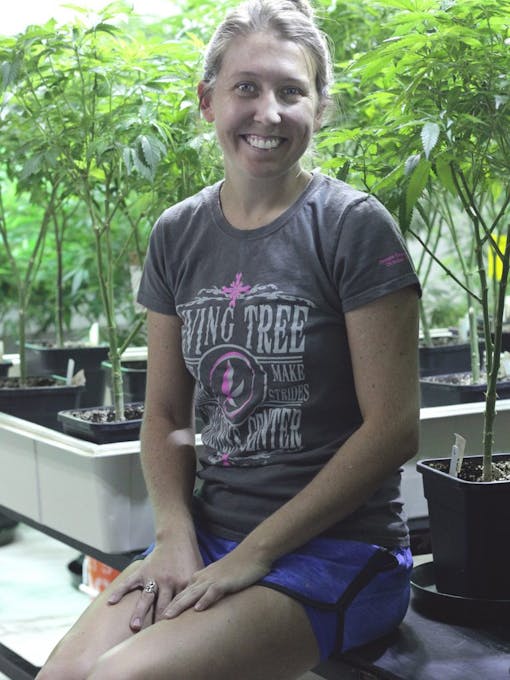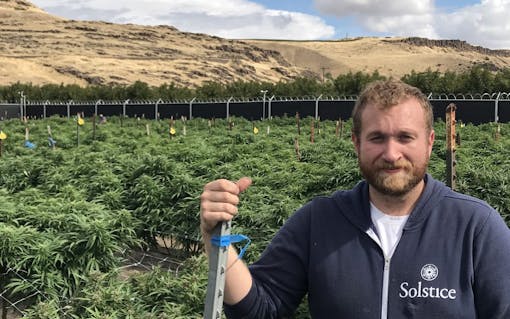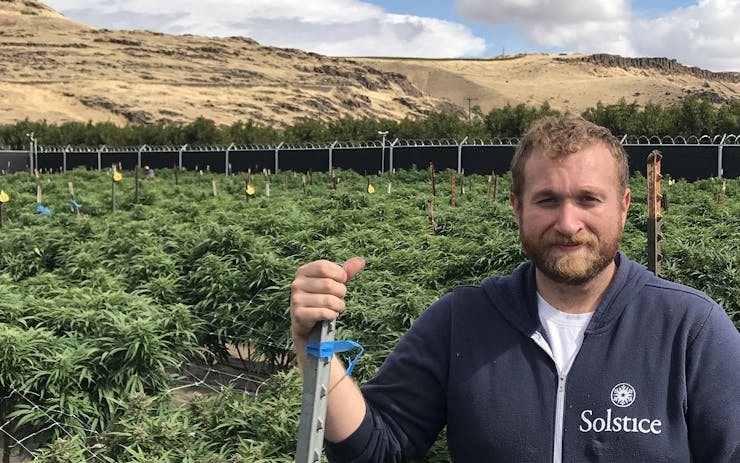This article is sponsored by General Hydroponics, the leading innovator in the field of hydroponics for more than 35 years.
Cannabis has been stigmatized and criminalized for decades, and throughout prohibition the farmers who grow it have often faced the largest risk. Historically, most growers have remained underground, operating in the shadows, and often hiding their passion from even those closest to them. With local legalization efforts comes the opportunity for them to openly put their skills to work, but still there are stereotypes of how a cannabis grower looks and acts.
We’ll spare you some of the descriptors, but most of these stereotypes do not shed light on the technical skill, passion, and dedication to the craft that is necessary to produce high-quality flower or breed exotic varieties. Longtime growers are the ones responsible for passing down their knowledge of the plant and evolving the various cultivation techniques into how we currently farm cannabis today.
The reality is that it’s not uncommon for the modern cannabis grower to have an extensive background in horticulture, commercial farming, or a formal degree in plant science. Many others start as hobbyists and let their passion for the plant guide their growing efforts. To paint a more genuine picture of the present-day grower and share their own stories, we’ve profiled five growers from legal markets across the country.
Josh Kelsch, Pure Joy Family Farm

(Courtesy of Pure Joy Family Farms)
“If you don’t teach yourself, the plant will teach you.”
Josh Kelsch, 35, of Pure Joy Family Farm in Cheney, Washington grows cannabis indoors using a custom, organic coco/soil blend. He has been growing for over 10 years. Before legalization, he held down sales jobs and worked in fabrication while growing purely for economics. Over time, growing became more about the passion for the plant and sharing it with others.
Education is paramount for new growers, so Josh recommends immersing yourself in every aspect of what you’re doing because you’re working with a living plant. There are a lot of moving parts to manage with any garden, and they all must be working together to maintain an efficient garden. To Josh, keeping that harmony can be the hardest part of growing cannabis professionally. Luckily, hearing the enjoyment and receiving positive feedback from the community that tastes their products lets Josh and his team at Pure Joy know they are doing it right.
The future of cannabis cultivation is bright! Josh is particularly excited about the innovation and scientific understanding that continues to build and legitimize the industry. He explains that, “the research that will come out in the next decade will undoubtedly touch on almost everything we do.”
Sierra McDonald, The Giving Tree Wellness Center

(Courtesy of The Giving Tree Wellness Center)
“It’s so great when you hear patient success stories where cannabis was able to alleviate them of their chronic pain or addiction.”
Sierra McDonald, 29, grows cannabis for The Giving Tree Wellness Center in Phoenix, Arizona where they grow most of their crop hydroponically using a coconut coir medium. The exception being their CBD strains, which they grow using a no-till, living soil method. Before she started cultivating for The Giving Tree one year ago, she was putting her horticulture degree from the University of Georgia to use as a farmhand and research assistant at the university’s organic agriculture research farm.
Cannabis piqued Sierra’s interest as she was looking for jobs in the commercial greenhouse industry. Once she overcame the misconception that she wasn’t qualified enough, she leapt into the industry head first. She’s learned to follow her curiosities and question everything. “There are no real standards in this industry yet and different methods work for different environments,” she explains.
For Sierra, the most challenging part of growing cannabis so far has been the limited scholarly resources at her disposal. That has challenged her to do her own research which has helped her gain a deeper understanding of cannabis’ resilience. Apart from simply loving the plant, the most exciting part of being a cannabis grower is the opportunity to take the world of holistic and conventional medicine to a whole new level.
Corey Barnette, District Growers

(Courtesy of District Growers)
“Cannabis users are developing their perception of quality beyond that of mere potency.”
Corey Barnette, 47, grows cannabis for District Growers in Washington, DC. Growing since 1992, he’s amassed over 25 years of experience working with the plant as both a hobbyist and a commercial grower. His preferred gardening method is to utilize aeroponic techniques to maintain a perpetual growth system. Before growing became a full-time profession, he found success as a financial sponsor working in private equity and serving on the board of the San Diego Medical Collective. SDMC exposed the opportunity to do good by helping others, as well as a promising career path in the cannabis industry.
Farming cannabis presents many speed bumps and hurdles to overcome – especially in areas like recruiting talent, where finding employees that can routinely conform to and maintain commercial standards is difficult. On top of that, achieving consistent quality and yields with an agricultural product can be a complicated balancing act.
The future of legal cannabis cultivation is still uncertain, but moving forward Corey sees two distinct paths for cultivators: those who are true craftsmen will be able to provide exotic, high-quality flower, and the rest can focus their efforts on providing a consistent supply to extract producers and other product manufacturers. Regardless, Corey explains that cultivators need to keep in mind the evolving perception of consumers who are thinking beyond potency and have more discerning tastes when it comes to aesthetic, fragrance, and flavor of their cannabis.
Theodore Huggins, Solstice

(Courtesy of Solstice)
“If we choose to love and respect this plant the way it loves and respects us, we can all win. If we abuse it or let one person own it, no one will.”
Theodore Huggins, 28, has been farming organic fruits, vegetables, herbs, and flowers professionally using sustainable practices for the last 10 years. He refocused his efforts towards cannabis once he saw the potential to learn from the industry and guide growers towards more sustainable cultivation methods. At Solstice, in Washington State, the focus is on minimizing resources and total waste, while increasing total productive capability. They have found success by incorporating sustainable practices into their farm’s overall hydroponic growing methods.
The plant will teach you a lot, so he encourages growers old and new alike not be afraid of new ideas and be eager to learn. Theodore will tell you that the hardest part of growing cannabis commercially is refuting the black market and back alley growing techniques that are based on weak merit. It can be a challenge, yet the sweet, uplifting scent from a farm full of gorgeous cannabis makes it all worth it.
As we look towards the future of cannabis, Theodore dreams of an industry full of small companies using ethical and sustainable cultivation techniques that don’t cause negative impacts to the earth or the consumer.
Katariina Lindholm, The Giving Tree Wellness Center

(Courtesy of The Giving Tree Wellness Center)
“No one grower knows everything about growing but every grower has something they can teach you.”
Katariina Lindholm, 27, of Phoenix, Arizona has been growing commercial cannabis for The Giving Tree Wellness Center for over a year and a half. She has a Master’s degree in Plant Breeding and wanted to find a career where she could leverage her knowledge of plant science and pursue something that she loves. She grows indoors using a coco coir growing medium.
Katariina’s academic background posed a new challenge when she quickly realized the lack of reliable cannabis research that made finding solutions to grow-related issues nearly impossible. However, being surrounded by a community of passionate growers has taught her that work doesn’t really feel like work when everyone loves what they are doing. Growing cannabis can teach you so much more than just plant science. It can teach you a lot about yourself. Katariina explains, “the more you learn, the more you grow.”
Looking forward, Katariina envisions a dichotomy in the cultivation landscape. Similar to what we see in grocery stores today, she believes a pronounced divide will separate the organic, no-till grows and the major commercial production facilities built off efficiencies, and that there is room for both to coexist in the marketplace.






